Tool for journalists: Baekdal News Analyzer, for making news content more relevant
Expert media commentator and consultant Thomas Baekdal has created a chatGPT that can scan your content and define who it best serves and how it can serve them better



Expert media commentator and consultant Thomas Baekdal has created a chatGPT that can scan your content and define who it best serves and how it can serve them better


This article was migrated from an old version of our website in 2025. As a result, it might have some low-quality images or non-functioning links - if there's any issues you'd like to see fixed, get in touch with us at info@journalism.co.uk.
What is it? A custom ChatGPT bot that breaks down news articles and offers areas of improvement to serve audiences better, created by media consultant Thomas Baekdal.
Cost: Free (does not require the ChatGPT Plus subscription plan), with limited prompts that reset every three hours. Sign up required to ChatGPT.
How is it of use to journalists? Baekdal made an in-depth explainer on how the tool can be used. The gist of it is this:
The GPT will spit out a few insights, such as an overview of the key sources cited in the article with key quotes and context.
NB: Your employer could see inputting news content into ChatGPT as a copyright concern. Get the necessary clearance first.
Also, ChatGPT is far from faultless. Baekdal says that his GPT is specifically instructed to adhere to "journalistic standards" as best as possible:
"The GPT operates strictly within the confines of the source material, avoiding any addition of external information or assumptions. It adheres to a journalistic approach, prioritizing accuracy, factfulness, and informativeness, ensuring a reliable and professional analysis. It communicates in a professional, administrative assistant-like tone, offering clear and structured responses. If no information is found for a given category, the GPT will explicitly state "none" or "not applicable," ensuring that all output fields are addressed as instructed."
We tested the tool with a recent article about how publishers can use first-party cookies.
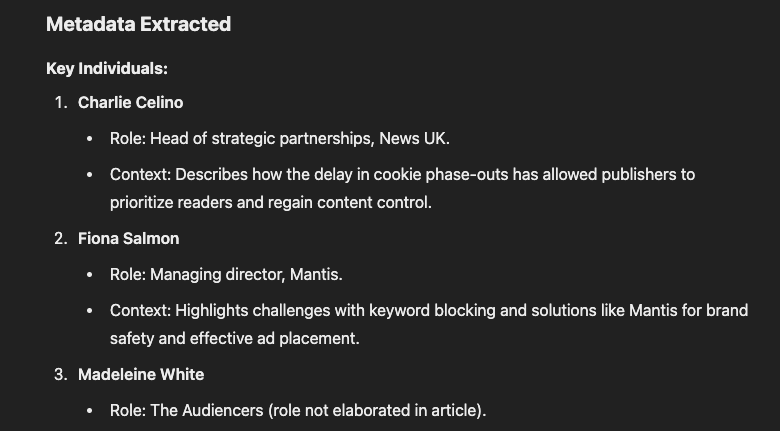
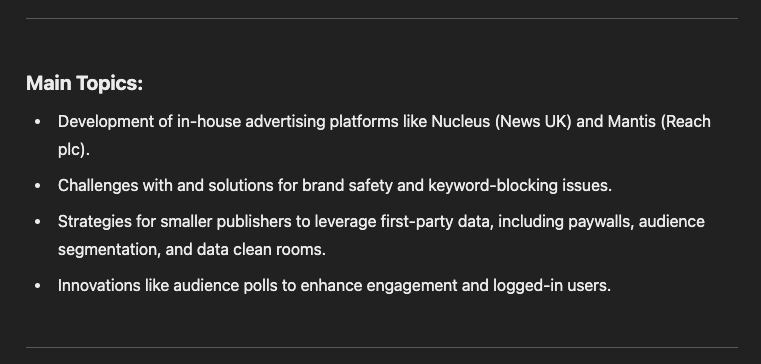
The first is assessing the relevant user need(s) of the article. The chat is trained in part on the user needs model 2.0, co-developed by smartocto and Dmitry Shishkin, who pioneered the user needs model at BBC News before it was expanded to include eight user needs.
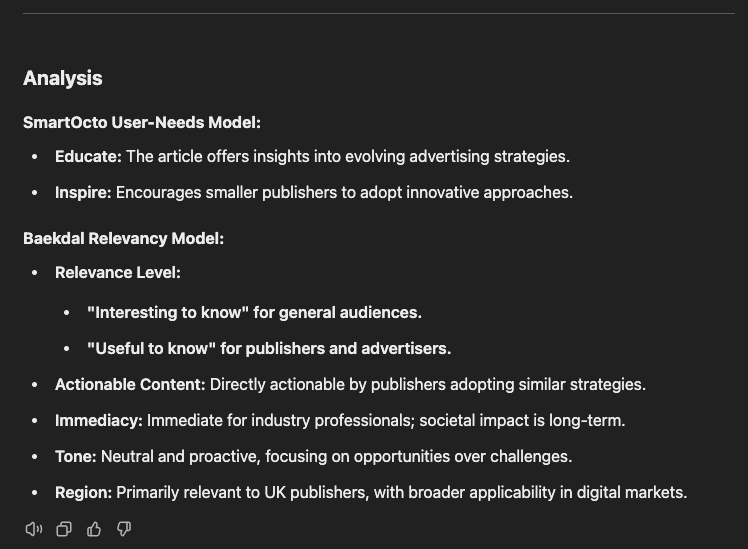
The second set of analysis is of his own making, the Baekdal Relevancy Model. This considers who the best audience is for the article, considering its relevance, actionability, immediacy, tone and region.
Consider the below scale as an indication of how this works.
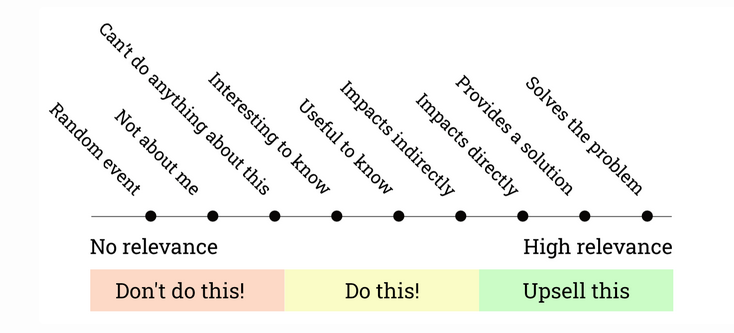
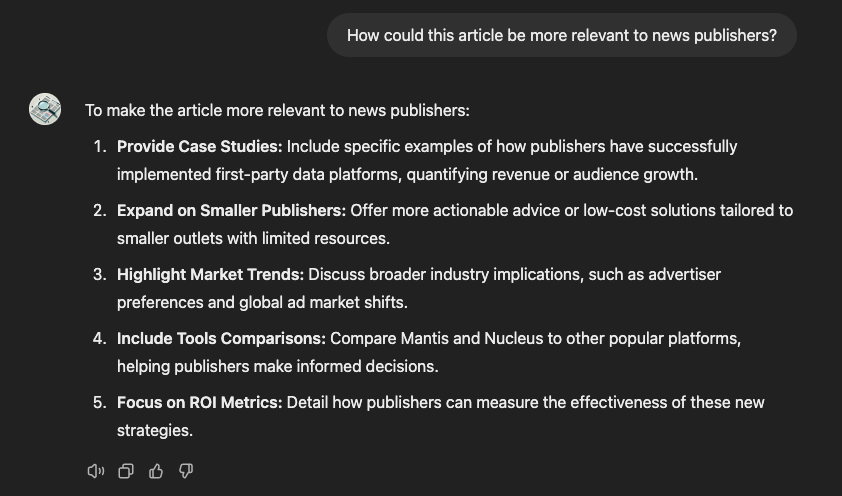
Potential applications for newsroom is a quick gut-check to see if articles have hit the mark in terms of their audiences' wants and needs, and areas of improvement on content strategy.
In an email to Journalism.co.uk, Baekdal said: "This is not intended to be a service. I made it as an experiment and as a way to visualise the concept. People can use it, of course, but I'm not trying to build an AI business. I do welcome suggestions and feedback, and I have some ideas for version two, but I don't know if I'm going to update it."
Baekdal has created another tool that can rank news articles on a more granular and individual level, which he has tested to create a news product entirely centred around individual preferences, relevance and user needs. But this is not available publicly.
Correction: a previous version of this article stated that a second tool had been made to provide individual-level insights. This is not correct, the tool is only being tested internally and has not been released publicly.